I love spicy. Crave spicy. Every few weeks I whip up a batch of chile oil and drizzle it on just about everything and anything.
Sometimes, I simply heat up some oil and then pour the hot, sizzling, bubbly oil over a bowl of chile flakes. The hot oil gives the chile flakes a pleasing toasty flavor and, after a while, turns the oil a vibrant shade of red. Capsaicin, of course, a potent antioxidant found in chiles is responsible for its heat, red color, as well as many of chile’s health promoting properties.
Other times, my preparation of chile oil is a bit more elaborate, perhaps a few spices (a cinnamon stick, star anise, Sichuan peppercorns), cloves of garlic and ginger infused in the oil before it’s poured over the chile flakes. Regardless, it’s easy to prepare and highly addictive.
Given my love for heat, it’s not surprising that I have an assortment of chile flakes and powders on hand — milder Turkish Kirmizi chile pepper flakes; smoky, earthy Urfa Biber chile flakes; medium spicy roasted Burmese chile pepper flakes; fruity, minimally spicy Calabrian chile flakes; Korean chile flakes (Gochugaru, what you would use to make kimchi), to name a few. Typically we just think of chile flakes as, well, chile flakes, without considering that many types of chile peppers can be dried and made into flakes. I like a mild-to-moderate spicy chile for the oil. Something that imparts a bit of heat, but won’t scorch your tastebuds.
When it comes to Sichuan peppercorn, there are several types. There’s Chinese red and green Sichuan peppercorns. Also, Sansho Japanese prickly ash, which has a more pronounced citrus flavor than Chinese Sichuan peppercorns. All produce a mild cooling sensation that gives way to an effervescent, electric, tingling/numbing sensation due to the presence of a molecule known as hydroxy-alpha sanshoo. I purchased the Sichuan peppercorns from Kalusyan’s, NYC. Personally I like the green Sichuan peppercorns, which have a nice citrusy flavor, with a bit more of that mouth numbing zing. On a side note, ground Sichuan peppercorn mixed with salt makes for a nice all-purpose seasoning and alternative to black peppercorns.
As for today’s dish, the noodles are a vegetarian take on a Sichuan classic, dan dan noodles. But instead of the traditional pork topping, I was in the mood for a vegetarian version — a combination of maitake and tofu, seared in a skillet (or wok) with ginger, garlic, soy and rice wine.
Regarding the the sauce for these noodles, I combined some chile oil with toasted and ground Sichuan green peppercorns, tamari, tahini/sesame seed paste (this brand) and Chinese black vinegar. Black vinegar is one of those unique ingredients that really doesn’t have a substitute. It’s a bit malty, caramel-y, and maple syrup-y with just a hint of acidity. You can find it on amazon or at most Asian grocery stores. Like anything else, they vary in quality. Look for black vinegar free from additives, preservatives or colorings.
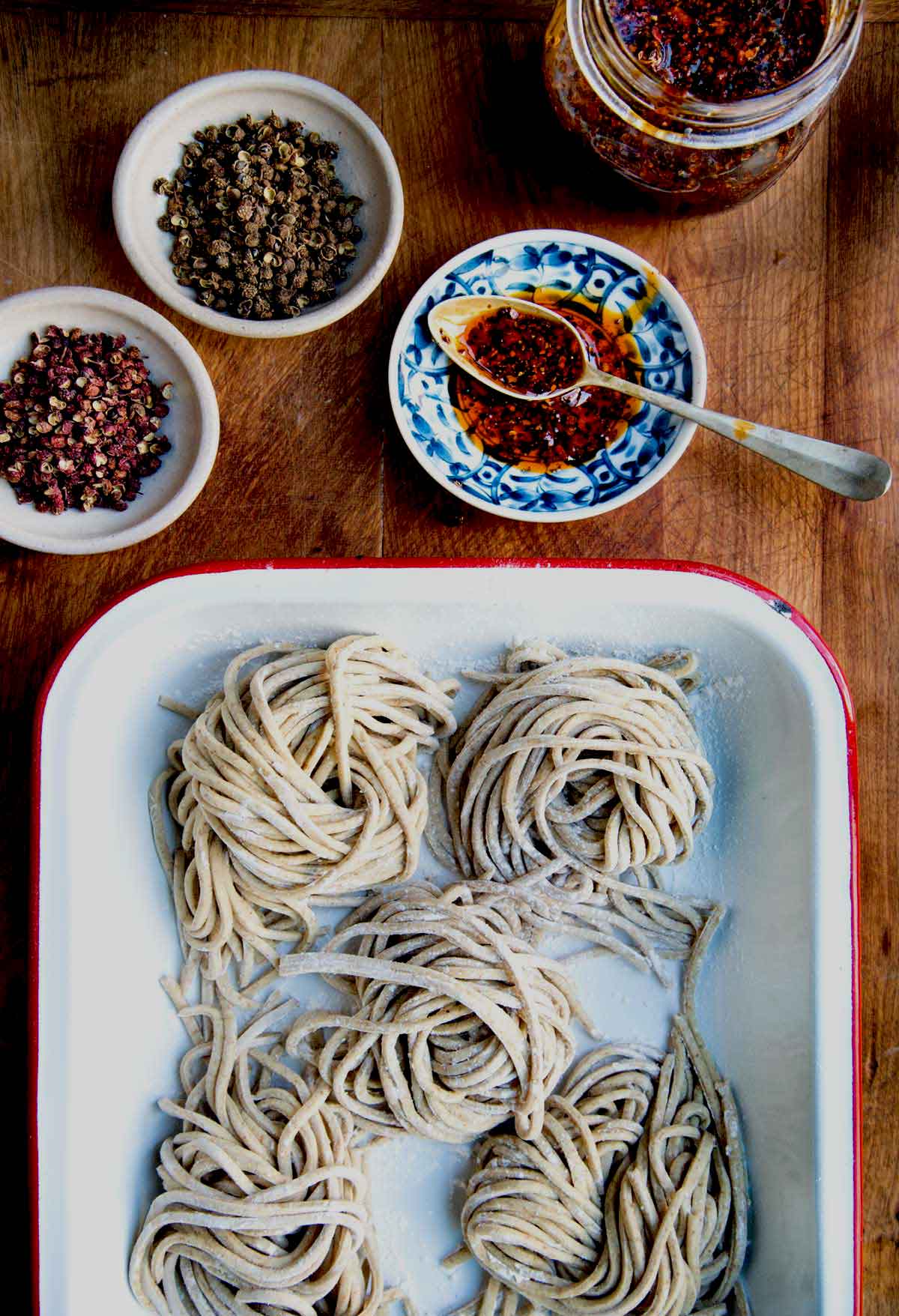
Took a trip to Philadelphia’s Chinatown neighborhood but couldn’t find fresh noodles, so I decided to whip up a batch of rye ramen-style noodles. I used this recipe from Food & Wine and cut the noodles on an Italian chitarra like this.
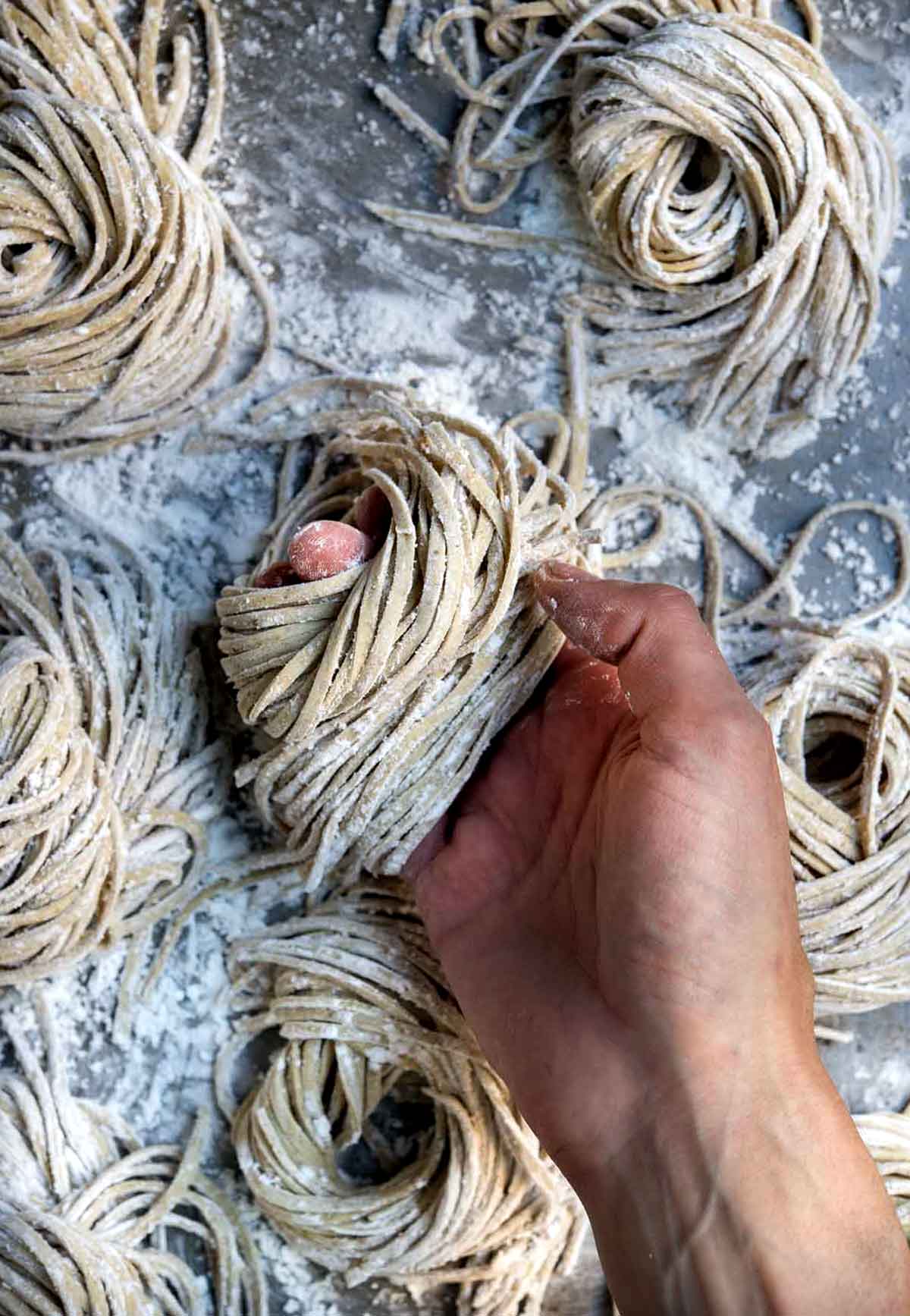
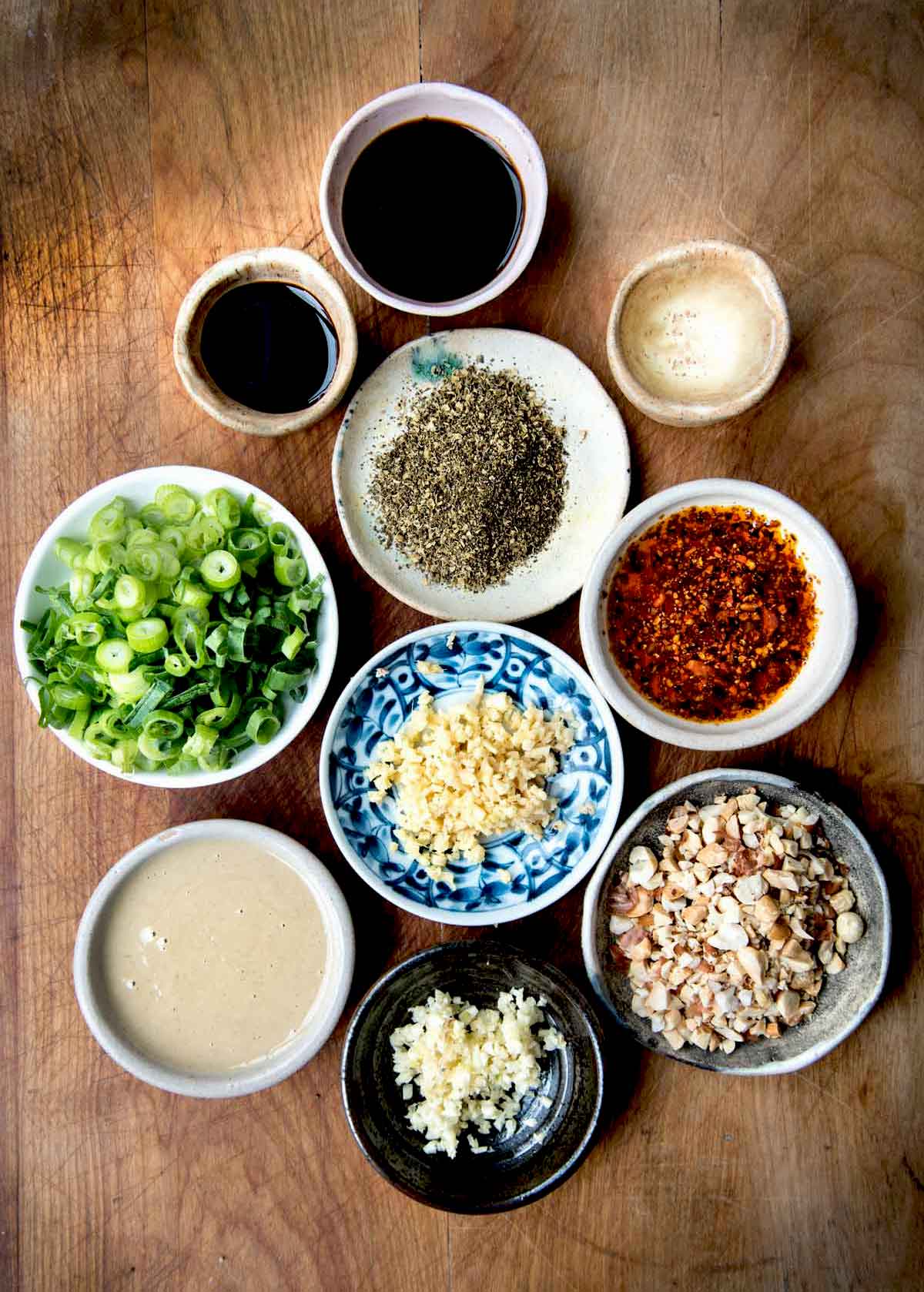
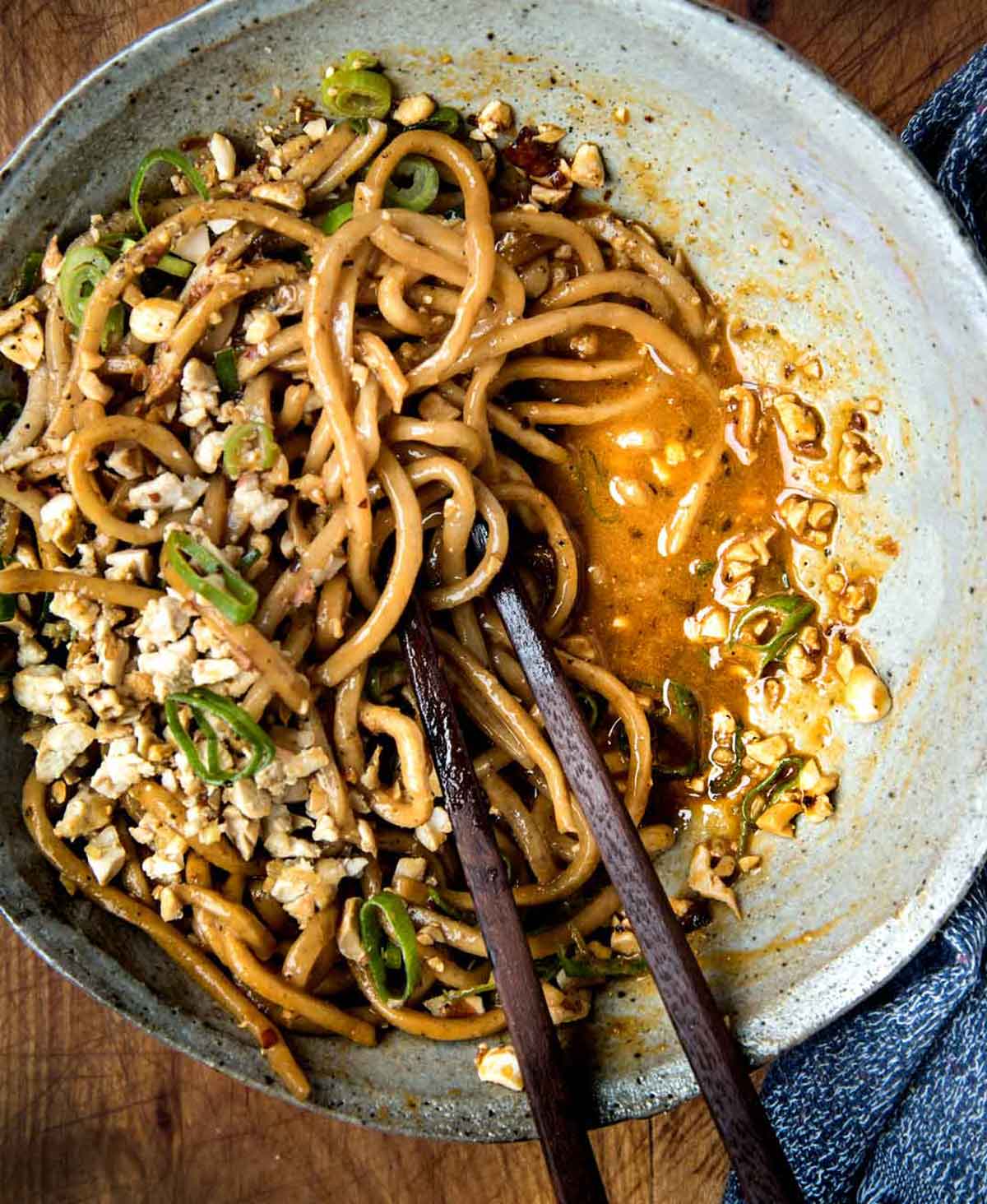
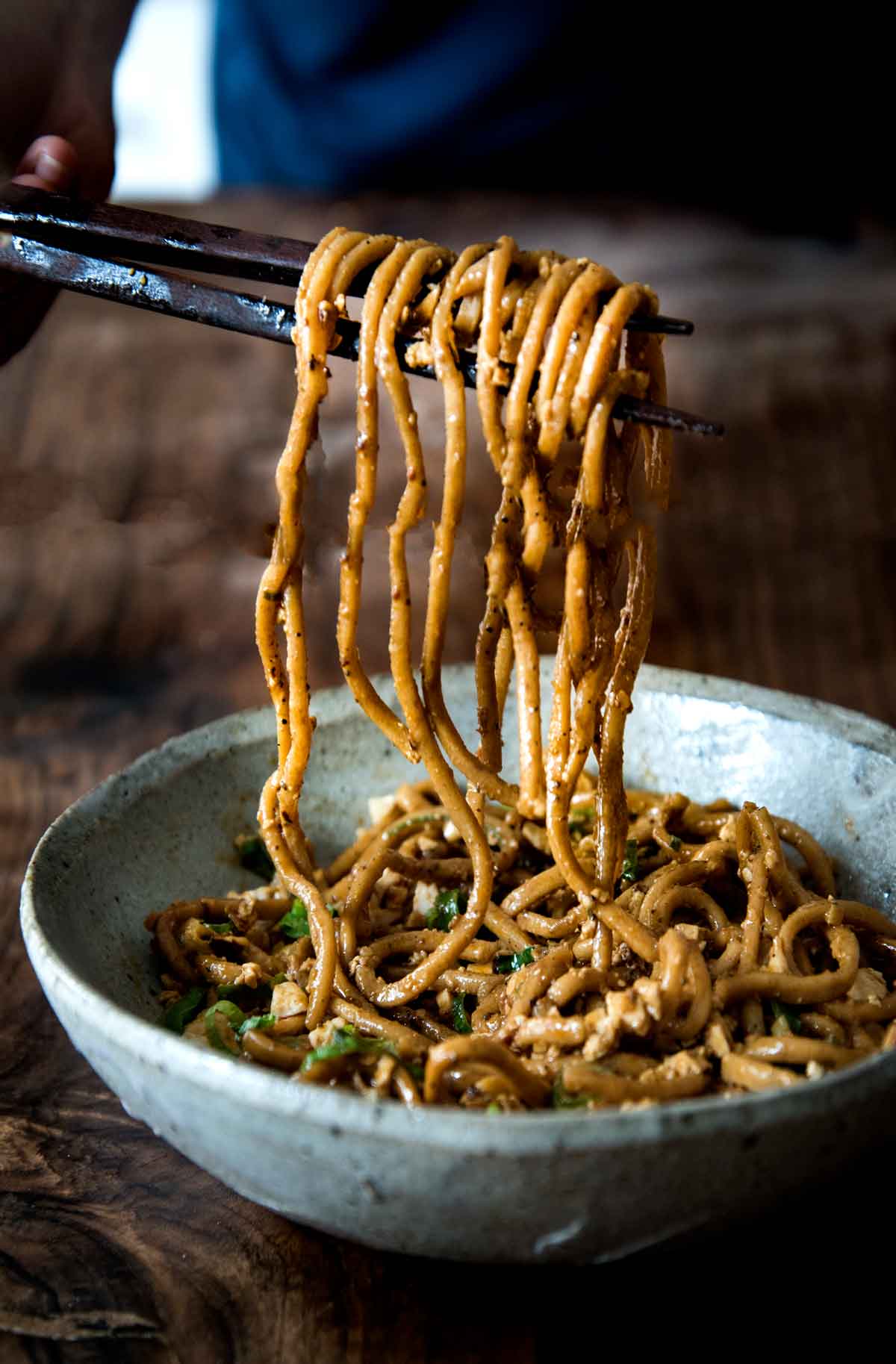
Spicy Vegetarian Sichuan Noodles
Serves 2
For the noodles
8-10 ounces dried or fresh ramen noodles (such as Sun Noodles)
Bring a pot of salted water to a bowl. Drop in the pasta and cook until just al dente. Drop into a bowl of ice water to stop the cooking. Drain.
For the Tofu-Mushroom
1 tablespoon oil
4 ounces firm tofu, finely chopped
4 ounces mushrooms (I used maitke), any variety, chopped
2 to 3 garlic cloves, minced
1 inch of ginger minced
1 teaspoon Shaoxing rice wine, Saki or dry Sherry
2 teaspoons soy sauce or tamari
Salt to taste
Heat a wok or large skillet over medium-high heat. Add the tofu and mushrooms and sauté until nicely browned. Add the garlic and ginger, and a little more oil if needed, and sauté another minute. Add the rice wine and soy and stir to combine. Salt to taste.
For the Sauce
1 teaspoon Sichuan peppercorns
4 tablespoons soy sauce or tamari
2 teaspoons Chinese black vinegar
2 to 4 tablespoons Sichuan chile oil plus some flakes, depending on desired heat level (recipe below)
2 tablespoons tahini
Splash of pasta cooking water
Combine the Sichuan peppercorns, soy sauce, black vinegar, Sichuan chile oil and tahini in a bowl. Whisk to combine. Add a tablespoon or two of pasta cooking water, just to loosen up the sauce a bit.
Toppings
Thinly sliced scallions
Roasted, chopped peanuts
Ground Sichuan peppercorns
To Assemble
Spoon a few tablespoons of sauce in the bottom of each bowl. Layer half of the noodles on top. Spoon the tofu-mushroom mixture on top. Add thinly sliced scallions, chopped roasted peanuts and a pinch of Sichuan peppercorns. Add a little more sauce on top. Enjoy!
Sichuan Chile Oil
1/4 cup red pepper flakes, such as Korean chile flakes (Gochugaru)
2 teaspoons toasted and ground Sichuan peppercorn
3/4 cup oil, such as grape seed
1 cinnamon stick
1 star anise
1 tablespoon whole Sichuan peppercorns
3 bay leaves
2-3 slices ginger
Place the red chile flakes and ground Sichuan peppercorn in a heatproof bowl. Set aside.
Heat the oil with the cinnamon stick, star anise, whole Sichuan peppercorns, bay leaves and ginger in a pot over medium-high heat. Turn down the heat and simmer for 10 minutes.
Place a fine mesh strainer over the bowl with the chile flakes. Carefully pour the hot oil all over the chile flakes. Be careful, it will bubble up. Allow the oil to cool completely and allow the oil to infuse for at least 24 hours before using. Store in an air-tight container in the refrigerator for maximum shelf life.
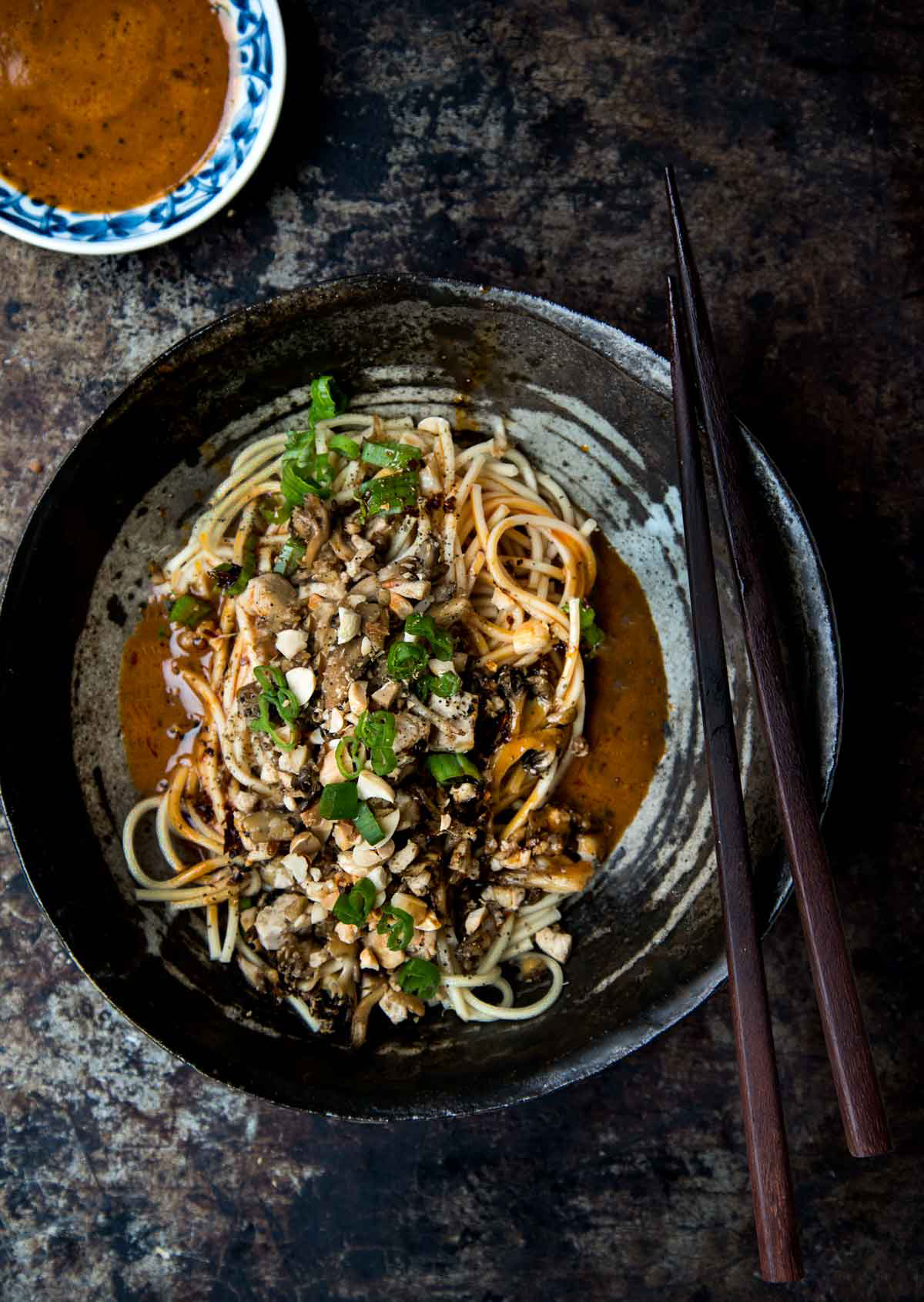


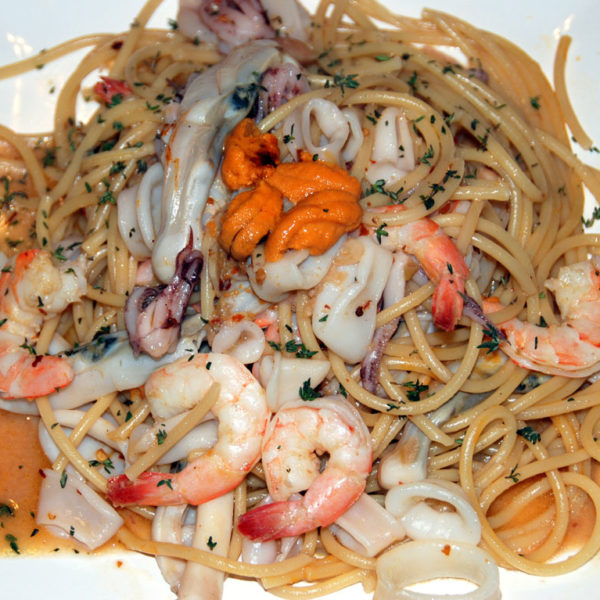
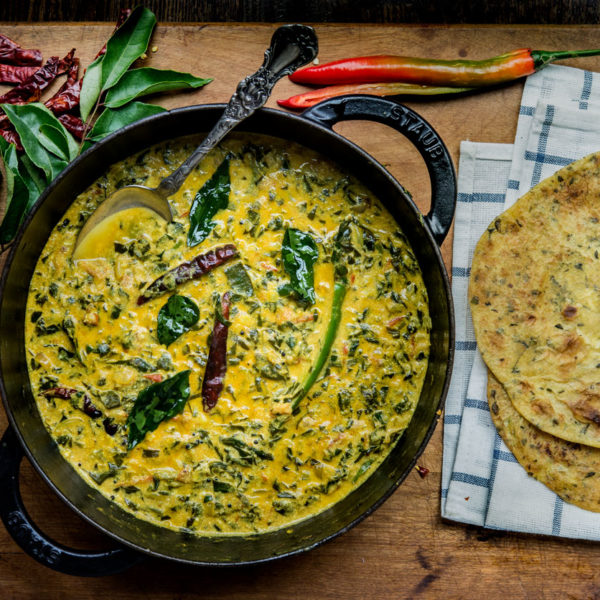
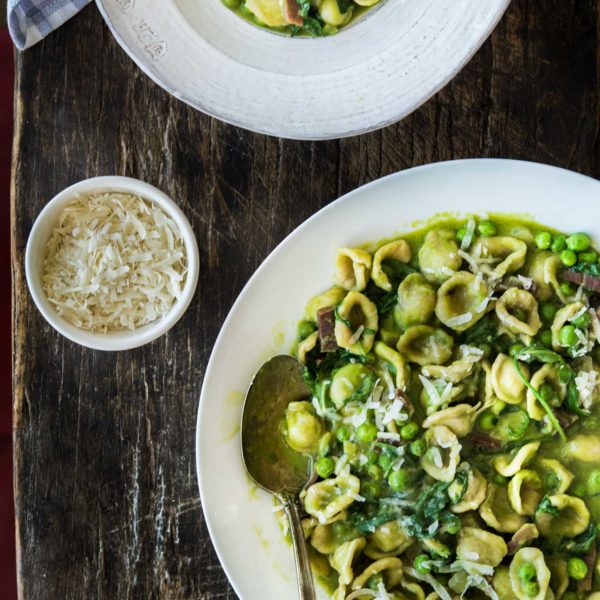


4 comments
Laura
Fantastic flavor combinations, and gorgeous photos as always. Would you mind sharing the recipe for rye noodles? I am intrigued! Thank you for being so inspirational.
wildgreensandsardines@gmail.com
Hi Laura, I used this recipe for the rye noodles from Food & Wine — https://www.foodandwine.com/recipes/chile-eggplant-mazemen-ramen-pork-belly
I cut the noodles on an Italian chitarra but you could also cut by hand.
Laura
Thank you so much! This will be on the coming week’s menu.